Duo playing is probably the most difficult kind of improvising. Not only must each player depend on only one other to modify or accompany his ideas, but unbridled creativity has to be muted to fit the other musician’s comfort zone. As these CDs demonstrate, skilled improvisers aren’t fazed by the challenge; but the instruments they choose are sometimes unusual.
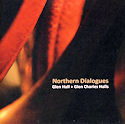 Ever since his arrival in Toronto from Winnipeg 30 years ago, reedist Glen Hall has played with top local and international musicians. A few years ago he began noticing he was being confused with pianist Glen (Charles) Halls, who had moved to the city from Edmonton. Being equally sardonic types, before Halls relocated to Alberta, the two decided to compound the confusion by recording a duo CD, Glen Hall + Glen Charles Halls - Northern Dialogues (Quiet Design Records CD Alas 009 www.quietdesign.us). Still there are as many musical as jocular reasons for doing so. With Hall alternating between breathy bass flute pressure and sprightly tenor saxophone runs, the eight tunes rage from atmospheric and meditative to rhythmic and bluesy. More formalistic than Hall, Halls often appears to be playing a fantasia, mixing legato chords with downward cascading arpeggios. With the low-frequency curvatures of his flute moderato and pointillist to complement the pianist’s comping, it’s Hall’s explosive saxophone tones which make the greatest impression. After adding speedy excitement to the measured and nearly opaque pianism on Astral, with Anything Blues Hall’s flutter-tonguing encourages Halls to display varied keyboard strategies including tremolo strumming.
Ever since his arrival in Toronto from Winnipeg 30 years ago, reedist Glen Hall has played with top local and international musicians. A few years ago he began noticing he was being confused with pianist Glen (Charles) Halls, who had moved to the city from Edmonton. Being equally sardonic types, before Halls relocated to Alberta, the two decided to compound the confusion by recording a duo CD, Glen Hall + Glen Charles Halls - Northern Dialogues (Quiet Design Records CD Alas 009 www.quietdesign.us). Still there are as many musical as jocular reasons for doing so. With Hall alternating between breathy bass flute pressure and sprightly tenor saxophone runs, the eight tunes rage from atmospheric and meditative to rhythmic and bluesy. More formalistic than Hall, Halls often appears to be playing a fantasia, mixing legato chords with downward cascading arpeggios. With the low-frequency curvatures of his flute moderato and pointillist to complement the pianist’s comping, it’s Hall’s explosive saxophone tones which make the greatest impression. After adding speedy excitement to the measured and nearly opaque pianism on Astral, with Anything Blues Hall’s flutter-tonguing encourages Halls to display varied keyboard strategies including tremolo strumming.
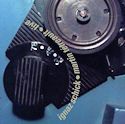 Hall has organized the annual 416 Toronto Creative Improvisers Festival since 2001. Guests from the 514 area code were welcomed last year, with Montreal turntablist Martin Tétreault’s sounds most unique. Live 33 45 78 (Ambiances Magnétiques AM 191 CD www.actuelle.com), a duo with Berlin-based turntablist Ignaz Schick, provides examples of these jangling and ratcheting textures. Unlike hip-hoppers who use LPs to insert song snatches or scratch beats, the Canadian-German duo manipulate tone-arms and cartridges as additional sound sources, while pummelling electrified surfaces for distinctive timbres. In two suites they mix granulated rubs and rattles, sharp rugged smacks and motorized rasps with beneath-hearing-level clatter and hisses to reveal textures ranging from stallion-like whinnies to forte ostinatos replicating a dentist’s drill. By the climax of Cave 12 they create a double-counterpoint showcase. The piece weaves vinyl needle rips, frenzied buzzes, static vibrating, video-game-like clanking and near-human cries into a neat package of harmonic interface, as multi-textural as it is percussive.
Hall has organized the annual 416 Toronto Creative Improvisers Festival since 2001. Guests from the 514 area code were welcomed last year, with Montreal turntablist Martin Tétreault’s sounds most unique. Live 33 45 78 (Ambiances Magnétiques AM 191 CD www.actuelle.com), a duo with Berlin-based turntablist Ignaz Schick, provides examples of these jangling and ratcheting textures. Unlike hip-hoppers who use LPs to insert song snatches or scratch beats, the Canadian-German duo manipulate tone-arms and cartridges as additional sound sources, while pummelling electrified surfaces for distinctive timbres. In two suites they mix granulated rubs and rattles, sharp rugged smacks and motorized rasps with beneath-hearing-level clatter and hisses to reveal textures ranging from stallion-like whinnies to forte ostinatos replicating a dentist’s drill. By the climax of Cave 12 they create a double-counterpoint showcase. The piece weaves vinyl needle rips, frenzied buzzes, static vibrating, video-game-like clanking and near-human cries into a neat package of harmonic interface, as multi-textural as it is percussive.
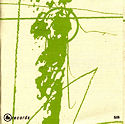 Pierre-Yves Martel and Philippe Lauzier also mix electro and acoustic timbres – and more – on their CD Sainct Laurens (&records 06 www.etrecords.net). Although Montrealer Lauzier confines himself to saxophone and bass clarinet, Martel, who lives in Montreal and Paris, suggests 17th Century music at points, since he plays the viola da gamba. He’s thoroughly modern elsewhere, preparing his instrument with speakers, contact mics and radios. The nine tracks range from lyrical showcases where Lauzier’s wide woodwind warbles brush up against sympathetic Renaissance-styled string vibrations; to abrasive and gritty scrapes, squeaks and flanges from Martel’s extended strings that contrast with intense, horizontal split-tones from the saxophonist. Defiantly multiphonic, the most characteristic track is Adda. It matches altissimo bass clarinet squeals with animal-like burrowing scratches plus droning oscillations from the plectrumist. Swelling into a cornucopia of stifled reed split tones and pinched string buzzes, the piece rends the sound space with both high and low-pitches before the distinctive parts meld.
Pierre-Yves Martel and Philippe Lauzier also mix electro and acoustic timbres – and more – on their CD Sainct Laurens (&records 06 www.etrecords.net). Although Montrealer Lauzier confines himself to saxophone and bass clarinet, Martel, who lives in Montreal and Paris, suggests 17th Century music at points, since he plays the viola da gamba. He’s thoroughly modern elsewhere, preparing his instrument with speakers, contact mics and radios. The nine tracks range from lyrical showcases where Lauzier’s wide woodwind warbles brush up against sympathetic Renaissance-styled string vibrations; to abrasive and gritty scrapes, squeaks and flanges from Martel’s extended strings that contrast with intense, horizontal split-tones from the saxophonist. Defiantly multiphonic, the most characteristic track is Adda. It matches altissimo bass clarinet squeals with animal-like burrowing scratches plus droning oscillations from the plectrumist. Swelling into a cornucopia of stifled reed split tones and pinched string buzzes, the piece rends the sound space with both high and low-pitches before the distinctive parts meld.
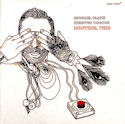 Saxophonist Michael Blake’s and drummer Kresten Osgood’s Control This (Clean Feed CF 136 CD www.cleanfeedrecords.com) has a characteristic track as well, which is as post-modern as it is traditional. Duke Ellington’s Creole Love Call is re-imagined by the Copenhagen-based percussionist’s hand-drummed ruffs, flams and back-beat bounces complementing overdubbed soprano, alto and tenor saxophone timbres from the Vancouverite-turned New Yorker. Layering his output so each reed is distinctively harmonized – and simultaneously in focus – Blake’s overall thematic variation is grainy and tough, with one horn honking, another mellow and the third always in the altissimo range. Reed work on others of the seven tracks ranges from breathy and romantic to flat-line flutters to jolly dance-like, as Osgood’s patterning encompasses bass drum whaps and cymbal rattles. In sync throughout on Elephants are Afraid of Mice, the two demonstrate how the drummer’s rim shots and press rolls don’t disrupt, but extend Blake’s variants which encompass spetrofluctuation and body-tube echoes on soprano plus dense repeated tenor saxophone trills.
Saxophonist Michael Blake’s and drummer Kresten Osgood’s Control This (Clean Feed CF 136 CD www.cleanfeedrecords.com) has a characteristic track as well, which is as post-modern as it is traditional. Duke Ellington’s Creole Love Call is re-imagined by the Copenhagen-based percussionist’s hand-drummed ruffs, flams and back-beat bounces complementing overdubbed soprano, alto and tenor saxophone timbres from the Vancouverite-turned New Yorker. Layering his output so each reed is distinctively harmonized – and simultaneously in focus – Blake’s overall thematic variation is grainy and tough, with one horn honking, another mellow and the third always in the altissimo range. Reed work on others of the seven tracks ranges from breathy and romantic to flat-line flutters to jolly dance-like, as Osgood’s patterning encompasses bass drum whaps and cymbal rattles. In sync throughout on Elephants are Afraid of Mice, the two demonstrate how the drummer’s rim shots and press rolls don’t disrupt, but extend Blake’s variants which encompass spetrofluctuation and body-tube echoes on soprano plus dense repeated tenor saxophone trills.
Two can be the most accommodating number in music as these discs prove.
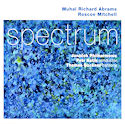


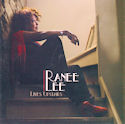 Ranee Lee Lives Upstairs
Ranee Lee Lives Upstairs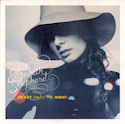
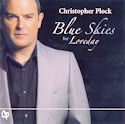 Blue Skies for Loveday
Blue Skies for Loveday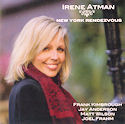 New York Rendezvous
New York Rendezvous 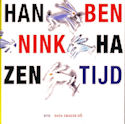 Hazzentijd
Hazzentijd 



